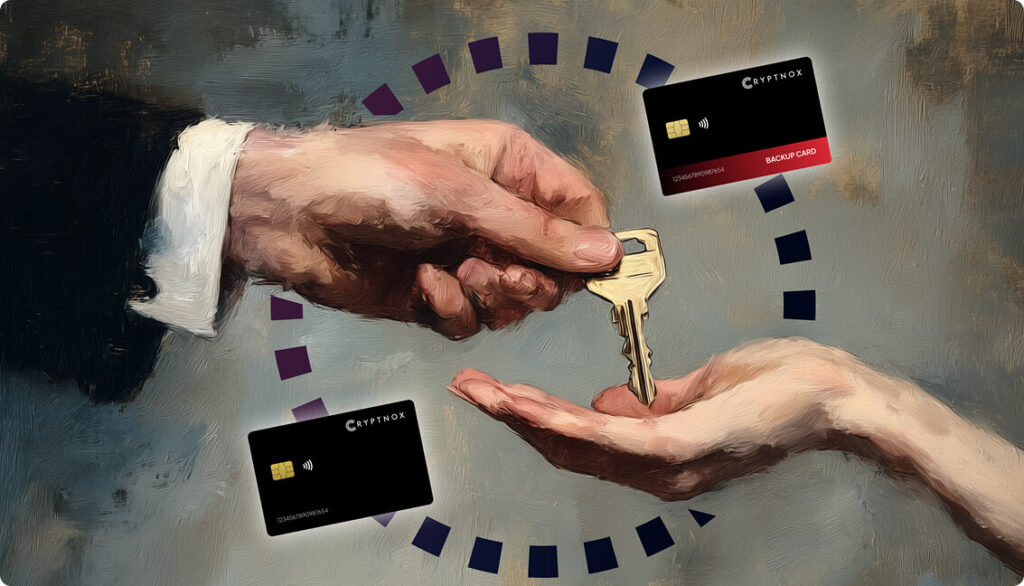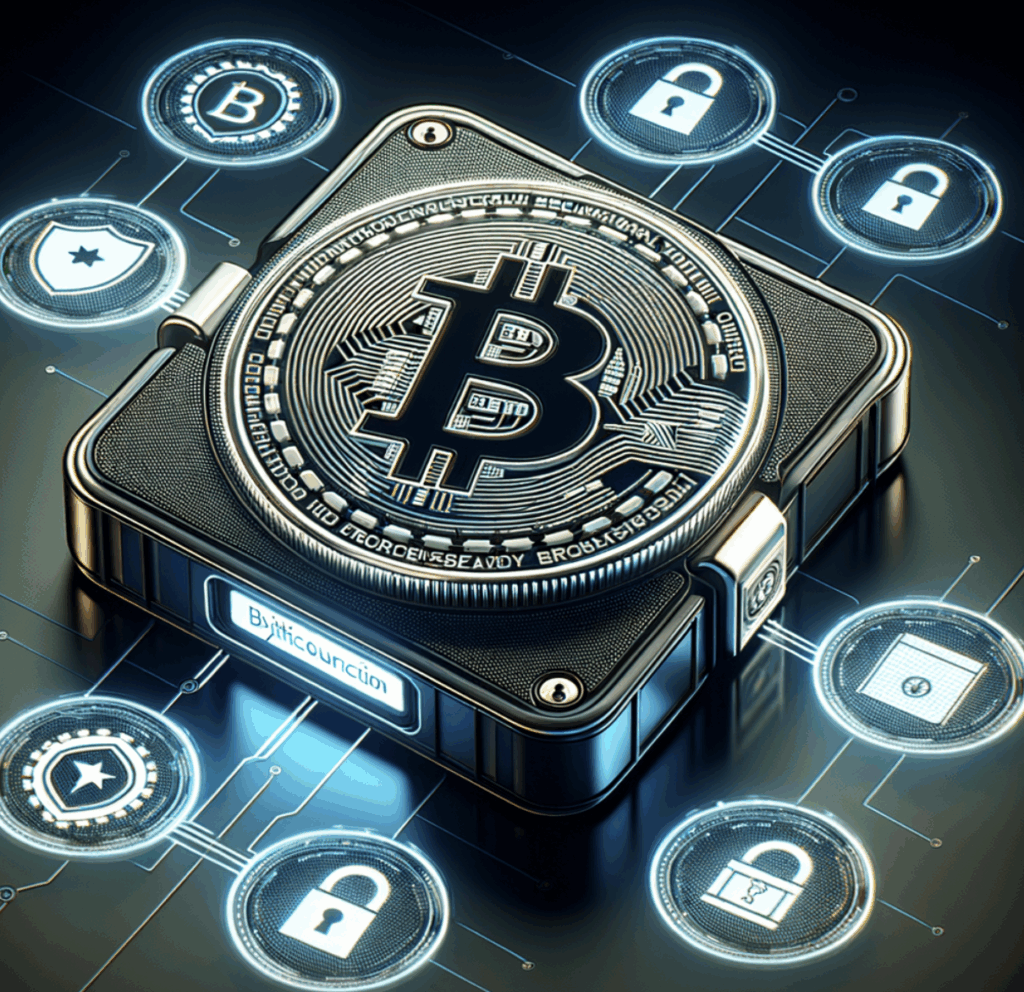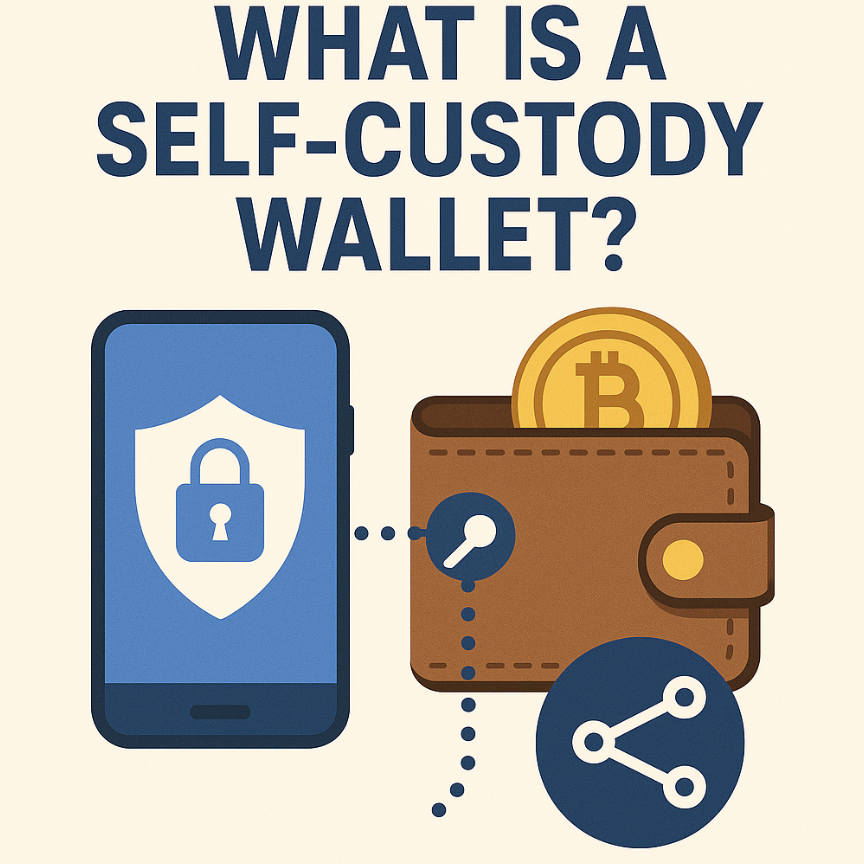If you hold XRP, you know how fast the crypto world moves. With XRP wallet numbers soaring past 6.5 million in 2025 and prices climbing, keeping your coins safe is more important than ever. Hacks and scams are on the rise, but there’s a way to protect your XRP that experts and seasoned investors trust: hardware wallets for cold storage.
Why Cold Storage for XRP?
Cold storage means keeping your crypto offline, away from hackers and malware. While software wallets and exchanges offer convenience, they’re still connected to the internet, making them vulnerable to attacks. A hardware wallet, on the other hand, stores your private keys (the secret codes that control your XRP) on a physical device that never touches the web.
Key Benefits:
- Keeps your XRP safe from online hacks and phishing
- You control your private keys—no third-party risks
- Easy to back up and recover if lost
XRP’s Growth: Why Security Matters More Than Ever
XRP is booming. In early 2025 alone, more than 638,000 new XRP wallets were created, pushing total active wallets to a record 6.5 million. Whale wallets (those holding at least 1 million XRP) hit an all-time high, showing growing interest from big investors. With XRP’s price ranging from $2.23 to $2.86 and analysts eyeing $6, the stakes are high for anyone holding Ripple.
What Is a Hardware Wallet?
A hardware wallet is a small device—about the size of a USB stick or credit card—that stores your crypto’s private keys completely offline. When you want to send XRP, you connect the wallet to your computer or phone, enter your PIN, and approve the transaction on the device itself. Your keys never leave the wallet, so hackers can’t steal them—even if your computer is infected.
Main Security Features:
- Secure chips: Protect against physical tampering and hacking
- Multi-factor authentication: PINs, biometrics, or physical buttons
- Offline storage: Private keys are never exposed to the internet
- Backup and recovery: Recovery seed lets you restore your wallet if lost
Top Features to Look for in an XRP Hardware Wallet
Not all hardware wallets are created equal. Here’s what to look for when choosing the best device for your XRP:
- XRP Support: Make sure the wallet natively supports Ripple.
- User-Friendly Setup: Clear instructions and easy onboarding.
- Multi-Currency: If you hold more than just XRP, pick a wallet that supports multiple coins.
- Physical Security: Tamper-proof design, water resistance, and self-destruct features.
- Backup Options: Recovery seed phrases and secure backup methods.
- No Internet Connection Needed: Air-gapped options use QR codes instead of USB/Bluetooth.
How to Secure Your XRP in Cold Storage: Step-by-Step
- Buy a reputable hardware wallet from a trusted source (never second-hand).
- Set up your wallet following the manufacturer’s instructions.
- Write down your recovery seed (usually 12-24 words) on paper—never store it digitally.
- Store your recovery seed in a safe place, like a safe or a safety deposit box.
- Transfer your XRP from your exchange or software wallet to your new hardware wallet address.
- Double-check your balance on the wallet’s screen, not your computer.
- Regularly check that your device and recovery seed are secure and up to date.
Why Hardware Wallets Are Booming in 2025
The hardware wallet market is exploding, expected to hit $1.5 billion by 2032, with a growth rate of over 23% per year. As more people invest in crypto, demand for secure, offline storage is skyrocketing. Newer wallets now offer:
- Biometric authentication (fingerprint, face ID)
- Air-gapped designs (no USB/Bluetooth—uses QR codes)
- Tamper-resistant chips for extra protection
North America leads the world in hardware wallet adoption, thanks to high crypto awareness and investment in security technology.
Pro Tips for Maximum Security
- Always buy hardware wallets directly from the manufacturer.
- Never store your recovery seed online or take photos of it.
- Test your recovery process with a small amount before transferring all your XRP.
- Update your wallet’s firmware regularly for the latest security patches.
- Consider splitting your XRP across multiple wallets for extra safety.
Best Hardware Ripple Wallet: How to Secure Your XRP in Cold Storage
1) CRYPTNOX – Best Hardware Ripple Wallet
Take control of your cryptocurrency with the Cryptnox Hardware Wallet, designed for bank-level security and user-friendly operation. Protect your digital assets with confidence, whether you’re storing, swapping, or diving into DeFi. The Cryptnox wallet combines cutting-edge security features, seamless Web3 integration, and an innovative backup system to ensure your crypto is always safe and accessible.
Key Features
1) Unmatched Security
– Secure Element Storage: Private keys are stored in a tamper-proof secure element, ensuring only you have access.
– Biometric Authentication: Adds an extra layer of protection for transactions and access.
– FIDO2 Functionality: Supports secure passwordless authentication for enhanced versatility.
2) Innovative Dual-Card Backup
– The dual-card initialization process simplifies key creation and backup.
– The backup card ensures you never lose access to your assets, even if one card is lost.
– Quick setup with step-by-step instructions (see the Startup Guide).
3) Seamless Web3 Compatibility
– Integrates with MetaMask, WalletConnect, and other Web3 apps.
– Supports DeFi, NFTs, and GameFi on networks like Ethereum, Polygon, Avalanche, and more.
– Add custom blockchains and tokens via the Cryptnox mobile app for maximum flexibility.
– View Supported Coins.
4) User-Friendly Experience
– Quick Setup: Create blockchain addresses in seconds with the included setup video.
– Cryptnox Wallet App: Download from the iOS App Store or Google Play for easy transaction signing, asset transfers, and management.
– Intuitive design for both beginners and advanced users.
5) Versatile Use Cases
– Securely store cryptocurrencies.
– Sign transactions quickly and safely.
– Explore decentralized finance, NFT marketplaces, and play-to-earn gaming.
Why Choose Cryptnox?
- Peace of Mind: Cutting-edge security prevents unauthorized access, keeping your assets safe.
- Simplified Blockchain Security: Designed for the crypto community, Cryptnox makes owning your keys easy and stress-free.
- Global Availability: Purchase directly from the CRYPTNOX Shop or Amazon stores in the US, DE, FR, IT, BE, SE, ES, PL, NL, CA, MX, and AU.
- Preferred US Shopping Solution: Fast and reliable delivery for US customers.
How It Works
- Order your Cryptnox Hardware Wallet from the CRYPTNOX Shop or Amazon.
- Follow the setup video to activate your card and create blockchain addresses.
- Download the Cryptnox Wallet app from the iOS App Store or Google Play.
- Use your wallet to store, transfer, or manage crypto on supported platforms.
Shop Now: CRYPTNOX Shop
Available on: Amazon (US, DE, FR, IT, BE, SE, ES, PL, NL, CA, MX, AU)
Download the App: iOS | Android
Cryptnox: Your keys, your crypto, your control.
Buy your hardware wallet now and start securing your XRP today!
2. Ledger Nano X – Ledger
The Ledger Nano X is a trusted hardware wallet widely recommended for XRP storage due to its robust Bluetooth connectivity, allowing easy management via the Ledger Live app on mobile and desktop. It supports over 5,500 coins, including native XRP, secured by a certified EAL5+ secure chip which never exposes private keys externally. The device is compact and portable, offering support for staking, trading, and NFT management. Its proprietary firmware provides strong security, although it is closed-source, the Ledger Live ecosystem is highly regarded for user experience and frequent updates.
- Bluetooth & USB-C connectivity
- CC EAL5+ certified secure element
- Support for 5,500+ tokens including XRP
- Mobile and desktop management with Ledger Live
- Regular firmware updates and security patches
3. Trezor Model T – Trezor
Trezor Model T features an open-source firmware design popular among security-conscious users. It includes a vibrant color touchscreen and supports over 8,500 coins, including XRP. Though it lacks a secure element chip, it uses advanced privacy tools like CoinJoin and Shamir backup for enhanced security and recovery options. Its strength is in transparency and community trust, complemented by a user-friendly interface and widespread compatibility with crypto wallets and applications.
- Open-source firmware and software
- Touchscreen for easy interaction
- CoinJoin privacy and advanced backup options
- Supports 8,500+ cryptocurrencies
- Strong reputation for security and privacy
4. ELLIPAL Titan 2.0 – ELLIPAL
ELLIPAL Titan 2.0 emphasizes physical security with its air-gapped architecture that eliminates Bluetooth, Wi-Fi, and USB connections. This offline signing process uses QR codes to transmit transactions, reducing hacking risks. It supports more than 10,000 coins including XRP and NFTs. The wallet features a large touchscreen and firmware updates via SD cards. It caters to users focused on maximum isolation from online threats, though its bulkier form and slower update process may affect usability.
- Air-gapped (air isolated) wallet design
- QR code transaction signing
- Supports 10,000+ coins and NFTs
- Large touchscreen interface
- Firmware updated via SD card
5. SafePal S1 – SafePal
The SafePal S1 offers an affordable hardware wallet option with support for over 30,000 coins. It features USB-C and QR code scanning for device connectivity and has a built-in self-destruct mechanism if tampered with. While the firmware and interface might not match higher-end devices, it balances security and cost effectively. It’s an excellent choice for beginners or those wanting a lightweight cold storage device compatible with many cryptocurrencies including XRP.
- Supports 30,000+ coins and tokens
- USB-C and QR code connectivity
- Self-destruct mechanism for tampering protection
- Compact and portable design
6. OneKey Pro – OneKey
The OneKey Pro is a premium hardware wallet known for supporting over 30,000 cryptocurrencies, including native XRP. It features advanced security with four EAL6+ secure chips and fingerprint verification, ensuring private keys remain protected offline. This device offers Bluetooth, USB-C, and NFC connectivity, making it versatile for both desktop and mobile use. OneKey’s fully open-source hardware and firmware allow independent audits, enhancing transparency and trustworthiness. The wallet is designed for security-focused users who need cross-chain compatibility and seamless integration with major ecosystems.
Key features:
- Four EAL6+ secure chips and fingerprint authentication
- 30,000+ coin support with native XRP integration
- Bluetooth, USB-C, NFC connectivity
- Open-source hardware and firmware
- Rapid firmware verification and wireless charging
7. Tangem Wallet – Tangem
Tangem Wallet is a unique credit-card-sized hardware wallet that requires no battery or cables. Each card contains a secure chip for private key storage and supports NFC connectivity with an intuitive mobile app. It supports 1,000+ cryptocurrencies including XRP and is ideal for users seeking a portable, durable, and battery-free cold storage option. However, it lacks a physical screen and uses closed-source firmware, which might concern some advanced users. Its simplicity and ease of use make it great for long-term holders and travelers.
Key features:
- Battery-free, credit-card form factor
- NFC connectivity with mobile app integration
- Support for 1,000+ digital assets including XRP
- Durable and portable for on-the-go security
- Closed-source firmware (trade-off for simplicity)
8. KeepKey – ShapeShift
KeepKey is a hardware wallet known for robust security and a sleek interface. It supports XRP among other popular cryptocurrencies and provides a simple backup system. KeepKey connects via USB and is managed through the ShapeShift platform, simplifying asset management. The wallet balances security with ease of use, though it occasionally faces criticism for slower firmware updates compared to competitors. Its large screen enhances transaction verification, reducing the risk of errors.
Key features:
- Supports XRP and multiple cryptocurrencies
- USB connection with ShapeShift integration
- Large display for secure transaction verification
- Simple backup and recovery system
- Less frequent firmware updates
9. OneKey Classic 1S – OneKey
The OneKey Classic 1S wallet offers a high-security cold storage solution specializing in native XRP support with quick setup. It features an intuitive interface and mnemonic plus passphrase backup for added protection. While smaller in screen size than some models, it maintains a strong security posture with offline key storage. It is well suited for users who want straightforward XRP support and fast accessibility without compromising security.
Key features:
- Native XRP support and fast transaction signing
- Mnemonic and passphrase backup system
- Compact design with simple UX
- Offline key storage with strong security
- Quick setup process for convenience
10. Ledger Nano S Plus – Ledger
Ledger Nano S Plus is a compact and secure hardware wallet ideal for managing XRP and thousands of other coins. It is equipped with a certified secure element chip (CC EAL5+), safeguarding private keys offline. The device connects via USB and is compatible with Ledger Live, providing an intuitive interface with multi-account management. The Nano S Plus balances performance and price, making it attractive for users needing robust security without extra features like Bluetooth.
Key features:
- CC EAL5+ certified secure element chip
- Supports native XRP and 5,500+ cryptocurrencies
- USB connection with Ledger Live management
- Compact and portable design
- Frequent firmware updates for improved security
FAQ
What makes a hardware wallet better for XRP compared to software wallets?
Hardware wallets keep your private keys offline, eliminating exposure to online risks such as hacking or malware that software wallets face. This cold storage approach gives stronger protection, ideal for storing significant XRP holdings securely.
Can I manage other cryptocurrencies with an XRP hardware wallet?
Yes. Top hardware wallets like Cryptnox, Ledger Nano X, and SafePal support multiple blockchain networks and thousands of coins and tokens, allowing versatile asset management from one device.
How does the Cryptnox hardware wallet integrate with Web3 applications?
The Cryptnox wallet seamlessly connects to Web3 via WalletConnect and MetaMask, letting users interact safely with DeFi platforms, NFTs, and other decentralized apps without compromising key security.
Is biometric authentication secure for hardware wallets like Cryptnox?
Biometric features add a user-friendly layer of security by ensuring only authorized users approve transactions. Combined with offline key storage, biometrics enhance protection without transmitting sensitive data.
Do hardware wallets require an internet connection to work?
No. Hardware wallets are designed to keep your private keys offline at all times. Even when connected to your computer or smartphone to sign transactions, the keys never leave the device. This makes them highly secure compared to hot wallets or online exchanges.
What happens if I lose my hardware wallet?
If you lose your wallet, you can still recover your XRP and other assets using your recovery seed phrase (BIP39) on a new compatible hardware wallet. For devices like Cryptnox, the dual-card backup system also ensures you can restore access securely without relying solely on a single seed phrase.
Are hardware wallets compatible with mobile devices?
Yes. Most leading hardware wallets, such as Ledger Nano X, SafePal, and Cryptnox, work with mobile apps through USB-C, Bluetooth, NFC, or QR code scanning. This allows you to manage your XRP and other cryptocurrencies conveniently on both iOS and Android devices.
Try Cryptnox Hardware Wallet now for peace of mind managing your XRP and other digital assets.




